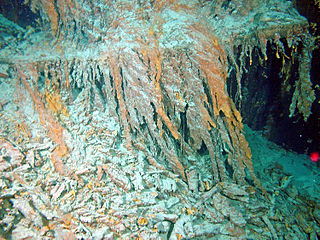The halophiles, named after the Greek word for "salt-loving", are extremophiles that thrive in high salt concentrations. While most halophiles are classified into the domain Archaea, there are also bacterial halophiles and some eukaryotic species, such as the alga Dunaliella salina and fungus Wallemia ichthyophaga. Some well-known species give off a red color from carotenoid compounds, notably bacteriorhodopsin. Halophiles can be found in water bodies with salt concentration more than five times greater than that of the ocean, such as the Great Salt Lake in Utah, Owens Lake in California, the Urmia Lake in Iran, the Dead Sea, and in evaporation ponds. They are theorized to be a possible candidate for extremophiles living in the salty subsurface water ocean of Jupiter's Europa and other similar moons.

The phylum Bacteroidota is composed of three large classes of Gram-negative, nonsporeforming, anaerobic or aerobic, and rod-shaped bacteria that are widely distributed in the environment, including in soil, sediments, and sea water, as well as in the guts and on the skin of animals.

Halomonadaceae is a family of halophilic Pseudomonadota.
Halomonas is a genus of halophilic (salt-tolerating) bacteria. It grows over the range of 5 to 25% NaCl.
Halomonas venusta is a Gram-negative halophilic Pseudomonadota, first described as Alcaligenes venustus and later reclassified as Halomonas venusta, along with other species when the genera Deleya, Halomonas, and Halovibrio and the species Paracoccus halodenitrificans were unified into a single genus, Halomonas, while the genus Zymobacter was placed in the family Halomonadaceae. The name stems from the Latin noun venusta which means "lovely" or "beautiful". It was originally isolated in marine water from Hawaii.
Halomonas alkaliphila is a Gram-negative halophilic Pseudomonadota. Its specific epithet stems from the Arabic word alkali (al-qaliy), the ashes of saltwort and the Latin adjective philus -a -um, meaning "friend" or "loving": loving alkaline media.

Halomonas titanicae is a gram-negative, halophilic species of bacteria which was discovered on rusticles recovered from the wreck of the RMS Titanic. Cristina Sánchez-Porro et al. first isolated the bacterium in 2010 from a sample of rusticle obtained from the RMS Titanic in 1991. One of the researchers, Henrietta Mann has estimated that the action of microbes like Halomonas titanicae may bring about the total deterioration of the Titanic by 2030. While the bacteria have been identified as a potential danger to oil rigs and other man-made objects in the deep sea, it also has the potential to be used in bioremediation to accelerate the decomposition of shipwrecks littering the ocean floor.
Chromohalobacter salexigens is a gram negative, oxidase and catalase positive, rod shaped, motile and moderately halophilic species of marine bacteria. It was isolated from Bonaire, Netherlands Antilles and from marine sponges of the Saint Martin's Island area of the Bay of Bengal, Bangladesh. Colonies are medium-sized, round and yellowish in color. The type strain is DSM 3043T. Its genome has been sequenced. It is a gamma-Proteobacterium, and as such, closely related to Pseudomonas and Escherichia coli.
Halomonas ventosae is a moderately halophilic, denitrifying, exopolysaccharide-producing bacterium. Its type strain is Al12T.
Halobacterium noricense is a halophilic, rod-shaped microorganism that thrives in environments with salt levels near saturation. Despite the implication of the name, Halobacterium is actually a genus of archaea, not bacteria. H. noricense can be isolated from environments with high salinity such as the Dead Sea and the Great Salt Lake in Utah. Members of the Halobacterium genus are excellent model organisms for DNA replication and transcription due to the stability of their proteins and polymerases when exposed to high temperatures. To be classified in the genus Halobacterium, a microorganism must exhibit a membrane composition consisting of ether-linked phosphoglycerides and glycolipids.
Halomonas organivorans is a halophile able to degrade aromatic compounds. It's considered a potentially useful bacteria for decontamination of polluted saline habitats. Its type strain is G-16.1T.
Halomonas desiderata is an alkaliphilic, halotolerant and denitrifying bacterium first isolated from a municipal sewage works.
Halomonas alimentaria is a bacterium first isolated from jeotgal, a traditional Korean fermented seafood, hence its name. It is Gram-negative, moderately halophilic, non-motile and coccus- or short rod-shaped, with type strain YKJ-16T.
Halomonas anticariensis is a bacterium. It is strictly aerobic and because of its production of exopolysaccharides forms cream-coloured, mucoid colonies. FP35T is the type strain. Its genome has been sequenced.
Halomonas johnsoniae is a halophilic bacteria first isolated from the environment surrounding dialysis patients. It is closely related to H. magadiensis.
Halomonas hamiltonii is a halophilic bacteria first isolated from the environment surrounding dialysis patients. It is closely related to H. magadiensis.
Halomonas stevensii is a halophilic bacteria first isolated from dialysis patients and the environment surrounding them. Its genome has been sequenced.
Halomonas meridiana is a bacterial species discovered in 1990 in the hypersaline lakes of Vestfold Hills, Antarctica.
Halomonas elongata is considered the type species of the genus Halomonas. It is a chemoorganotrophic, halophilic bacterium first isolated from a solar salt facility located in Bonaire, Netherlands Antilles.
Kushneria marisflavi is a Gram-negative and halophilic bacterium from the genus of Kushneria which has been isolated from the Yellow Sea in Korea.


